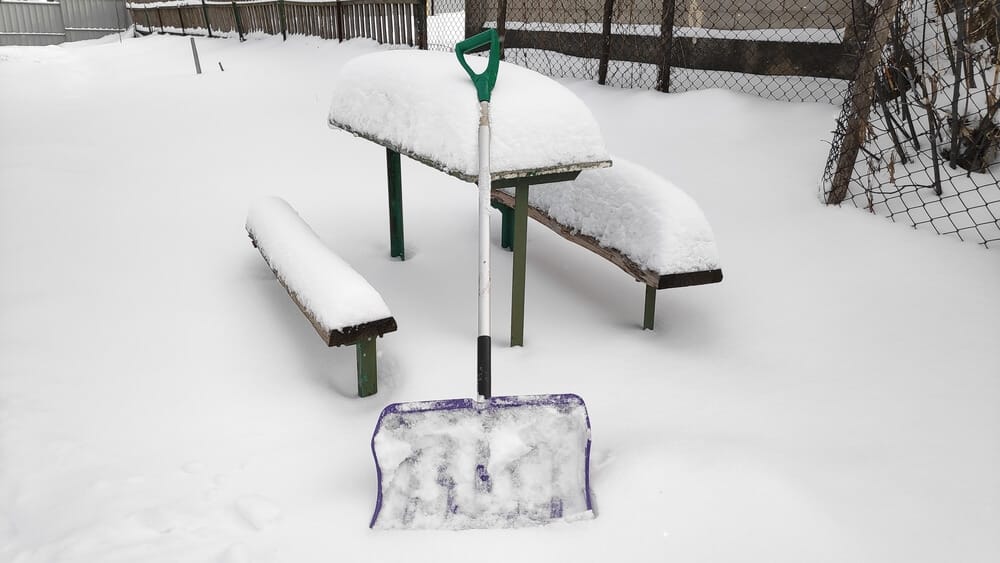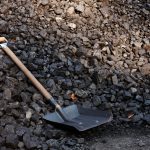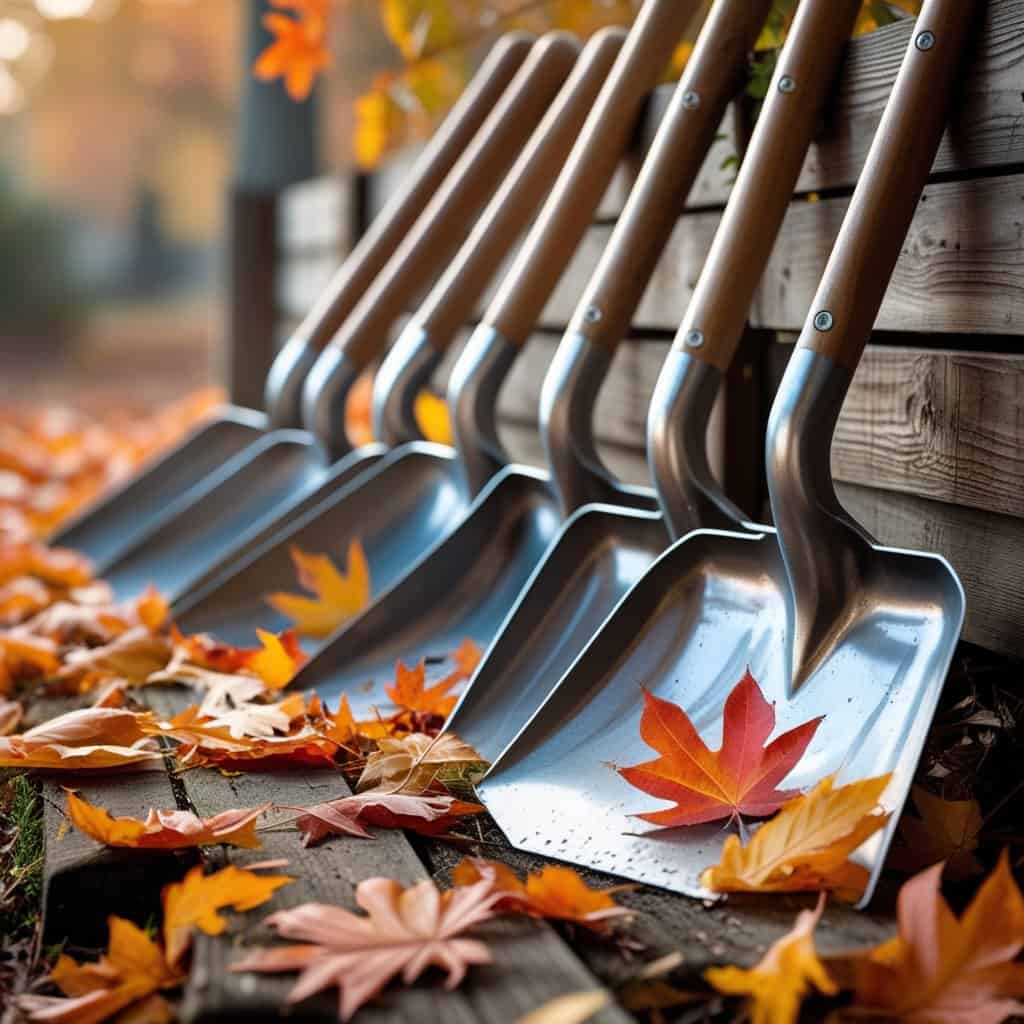Snow can quickly become a dreaded chore when it comes to shoveling. If you feel any anxiety or stress about having to shovel or have health issues, it may be time to reassess your situation. This guide will present the signs you may need to stop shoveling snow and find another way to clear your driveway or sidewalks.
Table of Contents
At What Age is Too Old to Shovel Snow?
The short answer: there is no definitive answer, as everyone’s physical abilities vary.
According to JACC, Journal of the American College of Cardiology, article “Effect of Age and Coronary Artery Disease on Response to Snow Shoveling: there is a relationship between snow shoveling and oxygen rates.
Investigators suggested that clearing snow from sidewalks and driveways may be a greater risk for sudden death than a drop in air temperature.
An individual over the age of 55 or those of any age with health issues, it is best to avoid shoveling snow, as this can be a strenuous activity. However, if you are in good health and feel up to the task, you may be able to continue shoveling, but it is essential to take frequent breaks and listen to your body.
If you are unclear whether or not you should be shoveling snow, it is always best to consult with your doctor as they will be able to advise you on what is best, based on your personal health history. It is better to be safe than sorry, so it is best to stop shoveling and find another way to clear your driveway or sidewalks if you feel uncomfortable.
5 Factors To Determine The Best Time to Stop Shoveling Snow
The five factors that determine the best time to stop shoveling snow are:
- The weather conditions
- Your health
- How much snow has fallen
- Time shoveling
- Your physical abilities
1. Weather
If the weather conditions are bad, such as snowing heavily or the wind blowing the snow around, it may be best to wait until the storm subsides before shoveling.
After that, it is best to shovel more often, moving small amounts of snow when snowing heavily instead of waiting for the snow to finish falling, which makes the snow heavier to move.
2. Health
Your health is also an essential factor to consider.
For example, if you feel pain in your back, shoulders, or neck, it is best to stop shoveling and try a different method. You may also want to consider ceasing if you feel lightheaded or dizzy, as this could signify a potential health issue.
3. Snow amount
How much snow has fallen will also affect how long you should shovel.
If there is only a light dusting of snow, you may only need to shovel for a few minutes. However, if there has been a heavy snowfall, you may need to shovel for more extended periods. If the snow is heavy or wet take breaks more often.
4. Time Shovelling
How long you have been shoveling is also a factor to consider. If you have been shoveling for a long time, over 30 minutes, you may be more likely to experience fatigue or pain.
However, most people of average strength and health can safely shovel for 30 minutes without experiencing discomfort or fatigue.
After 30 minutes, it is vital to take a break and drink plenty of water to stay hydrated. If you feel pain or fatigue, it is best to stop shoveling and try a different method.
If you are in good health and are used to strenuous activity, you may be able to shovel for more extended periods.
It is essential to take breaks often and listen to your body to avoid these issues.
5. Physical Abilities
Your physical abilities also determine if or how long you should shovel. If you have health issues or are not used to strenuous activity, you should take frequent breaks and listen to your body.
You may also consider using a snow blower or hiring a professional if shoveling snow is too tricky for you.
Tips on How to Shovel Snow Before You Get Too Tired
Now that you know when it might be time to stop shoveling snow, here are some tips on how to make the process of shoveling snow a bit easier:
- Use a shovel that fits you. A shovel that is too large or too small will be more challenging to use and could cause pain or fatigue.
- Make sure your snow shovel has a comfortable grip, as this will help prevent hand cramps while shoveling.
- Take breaks often. Shoveling for long periods can be strenuous, so it is important to take breaks every few minutes as this will help to reduce fatigue and pain.
- Stretch before shoveling to warm up your muscles and prevent injuries.
- Drink plenty of water while shoveling. Dehydration leads to fatigue and muscle cramps.
- Start by shoveling the snow that is closest to you. Doing this will help prevent you from reaching too far and getting tired too quickly.
- Push the snow when you can instead of lifting it. Pushing rather than lifting will help reduce your back and shoulders strain.
- If possible, use a snowblower, making shoveling snow much easier and quicker.
Signs Of Needing To Stop Shovelling
The first signs that you may need to stop shoveling is:
- You have health issues, feel pain in your back, shoulders, or neck. If you are experiencing any discomfort, it is best to stop shoveling and try a different method.
- Consider stopping if you feel lightheaded or dizzy, which could signify a potential health issue.
- Another sign that you should stop shoveling is if the snow is too heavy to handle. If lifting the snow puts too much strain on your body, it is time to take a break.
- Be aware of the weather conditions. If it is snowing heavily or the wind is blowing the snow around, it may be best to wait until the storm subsides before continuing to shovel.
There are other ways to clear snow from your driveway or sidewalks, such as using a snowblower or hiring a professional. However, if shoveling snow is causing you undue stress, it is essential to find a method that works better for you.
Using a Snow Blower
If you decide that shoveling snow is not for you, other options are available. One option is to use a snowblower.
Snow blowers can be purchased or rented. They operate by blowing snow into the air and out of your way and are a great option if you have a large area to clear, as it will save you time and energy.
If you are new to snowblowers, our guide, How To Find The Right Snowblower For You, will help you in your decision process.
Hiring a Professional
Another option is to hire a professional to clear the snow for you. A snow removal company is often the best solution if you do not want to deal with the hassle of clearing snow yourself.
Professionals typically have the proper equipment and experience to quickly and efficiently clear your driveway or sidewalks.
Again, community newsletters, local papers, and word of mouth will help you find someone that fits your budget and needs.
How Can You Prevent Back Injuries When Shoveling Snow?
Shoveling snow is hard on your back, so it is vital to take precautions to prevent injuries:
- Always warm up your muscles before shoveling.
- Use a shovel that fits you. Not a large nor a small shovel, and ensure the shovel has a comfortable grip.
- Take breaks often and drink plenty of water to stay hydrated.
- Start by shoveling the snow closest to you and pushing it instead of lifting and throwing the snow.
- Be mindful when throwing the snow over your shoulder or to the side when shoveling, as this can cause back problems. So try and avoid this action and push the snow in front of you.
If you follow these tips, you can help reduce your risk of back injury while shoveling.
Let’s Talk About Snow Melt And How Long It Takes for Snow To Melt?
Snowmelt and the length of time for the snow to melt depends on multiple factors, including the temperature, the type of snow, and the amount of sunlight exposure, which may be apparent.
Not so obvious is that it takes longer for wet snow to melt than dry snow. Wet snow is denser and has a higher water content, which means it takes longer for the heat to penetrate and start melting the snow.
The type of snow also affects how long it takes to melt. Powdery snow melts faster than compacted snow because it is less dense. Then temperature also plays a role in how long it takes for the snow to melt.
Snow will melt faster in warmer temperatures than in cooler temperatures. Finally, the amount of sunlight exposure affects how long it takes for the snow to melt. Snow will melt faster in direct sunlight than in the shade.
Concerning shoveling and snowmelt, it is best to shovel before the snow melts as it is lighter and easier to move.
What Should You Do If It’s Too Cold Outside?
There are several things you can do when it is too cold outside:
- Dress in layers to keep yourself warm. Wear loose-fitting, breathable clothing to avoid getting too sweaty and uncomfortable. You may also want to wear a hat or scarf to protect your head and face from the cold and help to keep your core temperature regulated.
- Try to stay indoors as much as possible. If you go outside, limit your time to only a few minutes at a time.
- Drink plenty of fluids to stay hydrated. Warm liquids like soup or tea will help warm your body from the inside out.
- Eat regular meals and snacks to maintain your energy levels. Eating will help generate heat in your body.
- Finally, stay active by dancing, walking around the house, or doing light exercises to keep agile and stretched when you go outside to shovel.
In conclusion, there is no definitive answer on how old is too old to shovel snow, but the general rule is that anyone over 55 needs to be more vigilant when shoveling.






